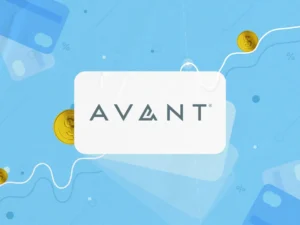Imagine a world where you can enjoy the perks of cryptocurrencies without worrying about price drops. Stablecoins might be the solution you’re looking for. These digital currencies keep their value steady by linking to traditional assets. This makes them a great choice for those wanting to earn cryptocurrency passively.
As blockchain technology grows in popularity, knowing about stablecoins is key for investors and businesses. Unlike Bitcoin and Ethereum, stablecoins are more stable and efficient for transactions. They are among the top picks for investing in cryptocurrencies today.
What are Stablecoins?
Stablecoins are a special part of the cryptocurrency world. They keep their value stable by linking to real assets. This makes them different from other cryptocurrencies that can change a lot in value.
For example, USDT (Tether) is tied to the US dollar. USDC (USD Coin) also follows the dollar’s value. These stablecoins help connect the digital world to traditional finance. They make trading and transactions safer and more stable.
Types of Stablecoins
Stablecoins are a key part of the cryptocurrency world. They fall into three main types. First, fiat-collateralized stablecoins are backed by real money. Tether (USDT) is a top example, keeping a 1:1 value with the U.S. dollar. This makes it a favorite among investors for its stability.
Crypto-collateralized stablecoins, on the other hand, use other cryptocurrencies as collateral. DAI is a well-known example, backed by Ethereum and other crypto assets. It stays stable while being part of the DeFi ecosystem.
Algorithmic stablecoins don’t use collateral. They use algorithms to keep their value stable. Ampleforth is a good example, adjusting its supply to maintain a stable value. Each type has its own benefits and risks. It’s important for investors to know these before trading or using yield farming strategies.
How Stablecoins Are Pegged
Stablecoins keep their value by linking to pegged currencies. They often hold reserves of fiat currency or other assets. This ensures stability and makes them a reliable store of value.
Smart contracts also play a key role. They adjust the supply of stablecoins based on market demand. This quick adjustment helps maintain value. Regular audits add to transparency, reassuring users about the reserves backing their stablecoins.
Market forces also affect stablecoin prices. The balance between supply and demand helps keep the value stable. With strong collateral and management, stablecoins offer security in digital transactions.
Advantages of Using Stablecoins
Stablecoins offer big benefits in the world of digital finance. They have less volatility than traditional money, making them reliable for transactions. They also speed up transactions, which is great for businesses and people.
Using stablecoins can save money compared to banks. This makes them a smart choice for managing finances. They also open the door to decentralized finance (DeFi).
Investors can earn passive income with stablecoins. This includes crypto staking and yield farming. Stablecoins are becoming more than just for transactions; they’re valuable assets in the crypto world. They help people grow their finances and invest wisely.
Risks Associated with Stablecoins
Stablecoins come with risks that investors should know. Regulatory scrutiny is a big factor. Governments are looking closely at stablecoins, which could lead to new rules.
Reserve mismanagement is another risk. Some stablecoins say they’re backed by assets to keep their value stable. But if these reserves aren’t managed right, trust can drop fast. It’s key to know how these reserves are handled.
Stablecoins also face tech risks. They use blockchain, which can be hacked. Choosing stablecoins from secure platforms is crucial to avoid losses.
Market volatility is a big challenge, especially for crypto-collateralized stablecoins. Price swings in cryptocurrencies can mess up the stablecoin’s value. Investors should do their homework before choosing a stablecoin, looking at its backing and management.
Use Cases for Stablecoins
Stablecoins have many real-world uses. They are great for everyday shopping because they don’t change much in value. This makes them key in many payment systems, making shopping online and offline smoother.
In countries still growing, stablecoins help send money across borders fast and cheap. This is a big help for those who can’t easily use banks.
Stablecoins are also important in blockchain tech. They help people use DeFi platforms easily. They’re good for quick trades on crypto exchanges, offering a stable place to invest even when markets are shaky.
Leading Stablecoins in the Market
In the world of cryptocurrency, some stablecoins have become leaders. Tether (USDT), USD Coin (USDC), and DAI are top choices for those wanting stable digital transactions. Each stablecoin has its own market size, affecting how widely used it is and the ecosystems it supports.
Tether (USDT) is one of the oldest and most used stablecoins. It’s often used for trading and adding liquidity to exchanges. Its large market size shows it’s a trusted asset, even with some questions about its reserves. USD Coin (USDC) is known for its strict rules and audits, making it popular with big institutions. DAI, on the other hand, is a decentralized stablecoin that lets users create stablecoins from their crypto.
The way these stablecoins are run is very different. USDC has a group of overseers, which means it’s watched by regulators. DAI, however, is run by a community called MakerDAO. This gives users a say in how it’s managed. Knowing how these stablecoins compare can help users choose the right one for them.
As more people start using these stablecoins, their features and stability will shape the crypto market. They offer benefits for traders, long-term investors, and users of decentralized finance (DeFi). Understanding the differences between these leaders can help users make better choices in the changing crypto world.
How Stablecoins Compare to Traditional Currencies
Stablecoins and traditional currencies have big differences. Traditional currencies are managed by central banks, which set interest rates and control money supply. This can cause inflation and economic problems. On the other hand, stablecoins offer a flexible option in our digital world.
Stablecoins are fast, cheap, and easy to use. They make it simple to send money across borders, unlike traditional banks. This makes them great for international trade and money transfers.
Stablecoins also give users financial freedom, away from government control. This builds trust, especially in unstable economies. As more people use digital money, the debate between stablecoins and traditional currencies will grow.
The Role of Stablecoins in the Cryptocurrency Ecosystem
Stablecoins are key in the world of cryptocurrencies. They connect traditional finance with digital assets. They help make trading smoother by keeping their value steady against regular money.
This stability lets traders move through the market’s ups and downs safely. It’s a big help in a world where prices can change fast.
In DeFi, stablecoins are vital for lending and borrowing. They make it easier to use and trade digital money. This makes the market more stable and secure for everyone.
Blockchain technology makes stablecoins even more useful. It lets smart contracts handle transactions safely and automatically. This makes trading and financial activities easier and more reliable.
As cryptocurrencies grow, stablecoins will keep playing a big role. They help shape the market and encourage more use of blockchain.
Regulatory Landscape for Stablecoins
The rules for stablecoins are changing fast, especially in the U.S. The Securities and Exchange Commission (SEC) and the Commodity Futures Trading Commission (CFTC) are setting clear guidelines. A strong legal base is key to encourage new ideas while keeping users safe and markets fair.
Stablecoin makers must follow strict financial rules now. As these agencies watch them closely, companies are working hard to meet these standards. This might lead to new laws that better govern stablecoin use.
These rules affect more than just following the law. Different places have different ways of handling stablecoins, creating a mix of rules. Places with clear rules might see more stablecoin use, while unclear rules could slow it down.
Recently, regulators have shown they’re really paying attention to stablecoins. This shows how crucial it is to have rules that help new ideas grow but also handle risks. The talks about stablecoin rules will shape digital finance in the U.S. for years to come.
Future Trends in Stablecoins
The future of stablecoins is looking bright with several trends on the horizon. One big trend is the mix of stablecoins with decentralized finance (DeFi) solutions. This combo lets users enjoy the stability of these digital assets while getting into lending, borrowing, and trading. This blend will likely make financial services more user-friendly.
More businesses and investors are jumping on the stablecoin bandwagon. This shows a big change in how they see stablecoins. As big companies and banks start using stablecoins for transactions, the old financial systems might change too. This could make stablecoins even more trusted and watched by regulators.
Central bank digital currencies (CBDCs) are also on the rise. Governments are looking into or testing CBDCs, which could change the game for stablecoins. Stablecoin projects will need to keep up and innovate to stay in the game. New tech is being developed to make these digital assets safer and more private, meeting user needs.
As these trends grow, the stablecoin market will likely change a lot. It will play a bigger role in the world of cryptocurrencies. People should keep an eye on these changes, as they might shape future investments and rules.
Conclusion: The Future of Stablecoins
Stablecoins are key in the world of cryptocurrencies. They bridge the gap between the ups and downs of traditional coins and the stability investors want. Their future looks bright, with more people using them for everyday purchases and in big finance deals.
They make digital transactions smooth and fast. This is crucial in today’s fast-changing financial world.
The demand for digital assets is growing. This means stablecoins will play a bigger role. New tech and rules could make them even safer and more useful.
Stablecoins help more people get into finance and make it easier to send money across borders. They are essential for the future of money.
In short, stablecoins are vital for the future of finance. They mix the good parts of cryptocurrencies with the trust of traditional money. With new tech, they will help grow digital assets and shape the financial world.












